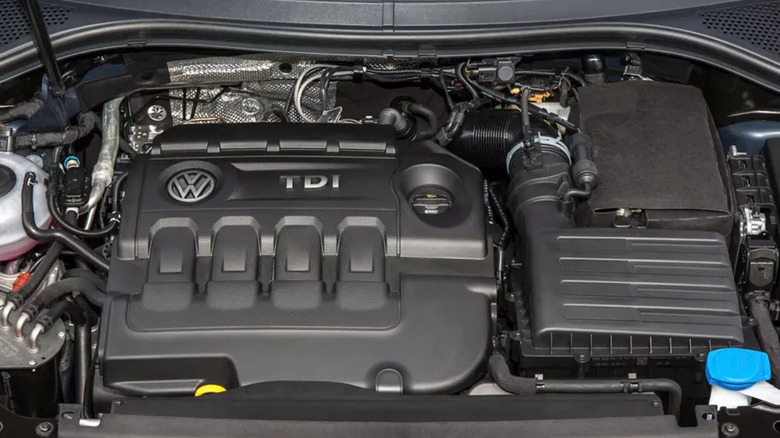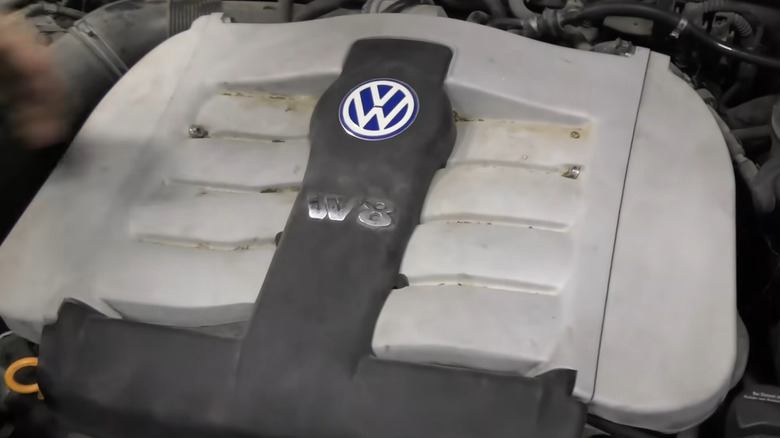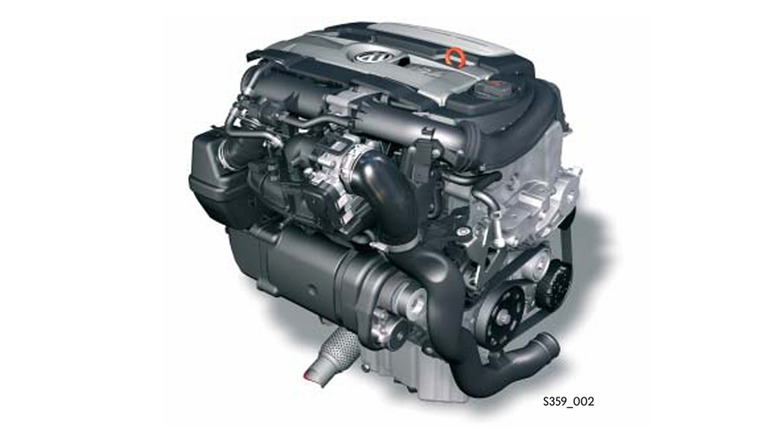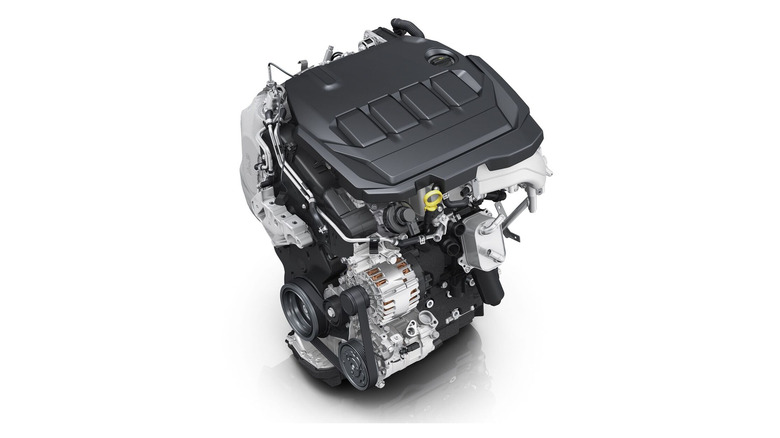5 Of The Worst Engines Ever Made By Volkswagen
Volkswagen. The name conjures images of the iconic Beetle, the beloved Bus, and a whole lineup of reliable, fun-to-drive cars. For decades, VW has built a reputation on solid, German engineering. And for the most part, it's a reputation well-deserved. But what happens when that 'Vorsprung durch Technik' (advancement through technology) stumbles? Even the best engineers have an off day, and in the sprawling history of this automotive giant, there have been a few more than that.
We're talking about engines that became infamous for all the wrong reasons. These aren't just a few minor hiccups, but legendary headaches for mechanics and nightmares for owners. From ridiculously high maintenance bills to catastrophic failures and even legal battles, these engines prove that not every VW is a masterpiece of German engineering. They are a fascinating and sometimes frustrating look into the dark side of automotive history.
Buckle up and prepare to be surprised. Here are some of the most infamous VW engines, ranked by their original release date.
VW W8 4.0-Liter (2001)
Ah, the W8. Volkswagen's brief and somewhat misguided attempt to go premium with a complex eight-cylinder engine tucked inside the humble Passat B5.5. Not only was this car one of the most boring Volkswagen models ever designed, but the engine had its own issues. The 4.0-liter W8 sounded like a masterpiece on paper: a unique "W" configuration combining two narrow-angle V4 banks into one compact design. In reality, it became a repair shop's favorite recurring customer.
The W8 engine was notorious for its maintenance nightmares. For starters, basic repairs often required an engine-out procedure, which was as expensive and inconvenient as it sounds. Camshaft adjusters tended to accumulate debris that would eventually clog and damage the oil pump. That's not just a problem; instead, it's a potential death sentence for the engine. Combine that with poor fuel economy (think V8 thirst with barely V6 power), and you get an engine that quickly fell out of favor, even among VW enthusiasts.
Adding salt to injury was the fact that parts for the W8 were rare and expensive, and since it was used only in a niche model from 2001 to 2004, finding mechanics familiar with it proved challenging. It's no surprise that the W8 variant of the Passat became infamous for costing more to maintain than many luxury cars. Depending on the day, it truly was either hilarious or a hand grenade.
VW 1.4 / 1.6 FSI (BAG / BLF / BLP) (2003)
Volkswagen's early foray into direct fuel injection with the 1.4 and 1.6 FSI engines seemed like a smart move in the early 2000s. These engines promised improved efficiency and cleaner emissions when used in cars such as the Golf Mk5, Jetta, Skoda Octavia, and Audi A3. Instead, they became well-known for the mechanical equivalent of chronic migraines.
Let's start with the carbon buildup. Because these were direct injection engines, fuel didn't wash over the intake valves like it does in port-injected engines. As a result, oil vapors and unburned fuel residue clung to the valves and formed thick carbon deposits. The outcome? Rough idling, misfires, sluggish acceleration, and expensive cleaning procedures like walnut blasting every 60,000 to 80,000 km. But the pain didn't stop there. The 1.4 FSI (engine code BAG) suffered from timing chain stretch and tensioner issues. If left unattended, the stretched chain could skip timing and lead to catastrophic engine damage.
The 1.6 FSI (BLF and BLP) wasn't immune either. It had a reputation for burning oil like it was going out of style, thanks to worn piston rings. Owners often had to top up oil every 1,000 kilometers or risk low-level warnings. Even worse, all of this headache came from engines that weren't particularly powerful to begin with. For the maintenance they demanded, they delivered underwhelming performance. It offered only frustration and regret to owners who expected refinement.
VW 2.5-Liter Inline-5 (07K, 2005)
Volkswagen's 2.5-liter inline-5 engine, used heavily across the Jetta, Golf, Beetle, and Passat lineup from 2005 onward, is a bit of an oddball. While it wasn't horrifically unreliable like others on this list, it had just enough quirks to make ownership feel like a part-time job.
The 2.5-liter engine was known for its roughness and vibration, especially at idle. It may have packed decent low-end torque, but refinement was not its strong suit. Owners often complained about its coarse nature, and it felt noticeably out of place in cars otherwise praised for comfort and polish. Then came the mechanical problems. The engine suffered from misfires due to failing ignition coils and spark plugs. This was such a recurrence that replacing these components became almost a routine maintenance item. Vacuum leaks, throttle body carbon buildup, and coolant leaks from the water pump and thermostat housing were added to the laundry list of recurring issues.
While not always catastrophic, these problems were annoying and frequent enough to rack up repair bills and test the owner's patience. It's a bit ironic, considering that this engine originally derived from Audi's high-performance inline-5s, yet it ended up being one of VW's most underwhelming powerplants. It was also incredibly thirsty for its output, offering mediocre fuel economy and unimpressive power delivery.
1.4-Liter TSI Twincharger CAVD (2008)
Volkswagen went for it with the 1.4-liter TSI Twincharger engine. Found in cars like the Polo GTI, Scirocco (yes, this odd name did exist), and Skoda Fabia vRS, this compact engine used a turbocharger and a supercharger to squeeze out impressive performance from a small displacement. Sounds genius, right? In theory, yes. In execution, it turned out to be a hot mess.
The biggest issue here was reliability. The combination of turbo and supercharger meant more parts to fail, and well, fail they did. Piston ring failures, cracked pistons, and misfiring cylinders were common problems, often leading to low compression and costly engine rebuilds. Many of these issues appeared shockingly early in the engine's life, sometimes under 100,000 kilometers. Then there were the timing chain problems. The CAVD engine used a timing chain instead of a belt, which you'd expect to last longer. Unfortunately, the reality was chain stretch, noisy startups, and in worst cases, full-blown timing jumps that could wreck the engine.
To make matters worse, even basic maintenance was tricky. Because of its complex layout, servicing the Twincharger was a headache for even seasoned VW mechanics. Add to that a reputation for high oil consumption and fragile internals, and you're looking at one of VW's most frustrating modern engines. What started as an engineering marvel ended as a cautionary tale.
EA189 2.0 L TDI Diesel (2009)
Finally, the most infamous of them all — the EA189 2.0-liter TDI. This engine didn't just make headlines; it made history, for all the wrong reasons. Found in millions of vehicles, including the VW Jetta, Passat, Golf, Audi A3, and even Skoda models, the EA189 is best known as the engine behind the Dieselgate scandal.
In 2015, regulators uncovered that VW had installed software in these engines that detected when emissions were being tested and altered the performance to meet legal standards. On the road, however, these cars spewed far more nitrogen oxides than legally allowed. The fallout from the settlement was massive: billions in fines, recalls, buybacks, and a global hit to VW's reputation. However, the problems didn't end with the software. After the mandatory so-called "fix" was applied to affected vehicles, owners began reporting a cascade of new issues. Reduced fuel economy, loss of power, sluggish throttle response, and increased EGR (Exhaust Gas Recirculation) valve failures became common. Some even dealt with clogged DPF (Diesel Particulate Filter) systems and more frequent regeneration cycles.
Frustrated with all these issues, some customers were even refunded for repairs related to post-fix failures. While the EA189 was once celebrated for blending diesel efficiency with performance, it is now remembered as a landmark in automotive deceit, and a nightmare to maintain after the fix.





